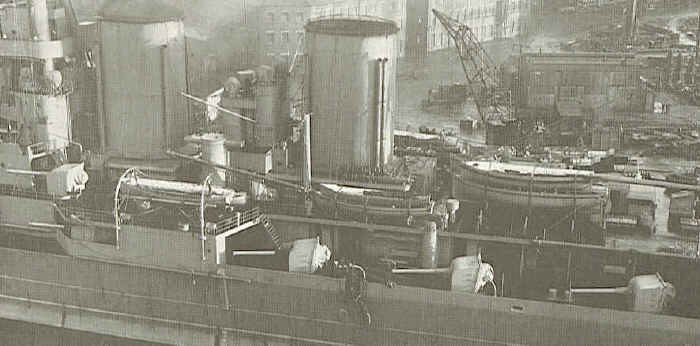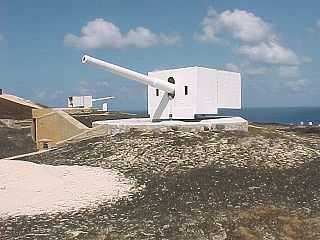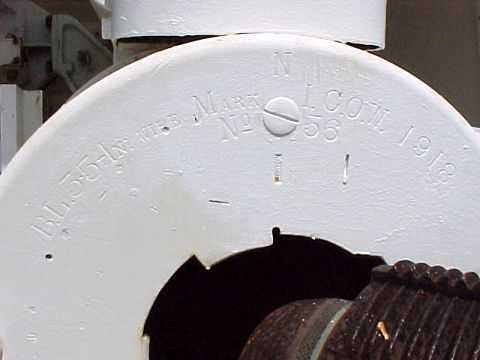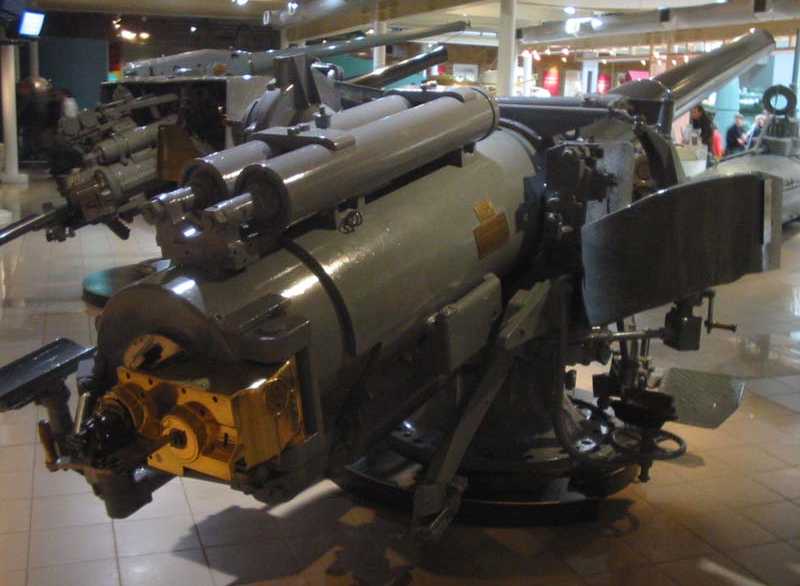|
This gun caliber was selected by the Greeks over the contemporary British 6" (15.2 cm) weapons because it fired a lighter shell than did the British 6" (15.2 cm) guns and as a result its ammunition could be more easily handled. It is interesting to note that similar considerations led the Japanese to adopt the 14 cm (5.5") caliber for their light cruisers built after World War I. During World War II, guns removed from the above ships were used to arm two AMC's while others were used for coastal defense batteries. Two ex-HMS Hood guns were sent to Ascension Island, as shown in the photographs below. These guns were built by Coventry Ordnance Works (COW) and were of wire-wound construction with a tapered inner A tube, A tube, full-length wire, B tube, overlapping jacket, breech ring and breech bush. The Welin breech-block was manually operated with a Holmstrom mechanism. A total of 81 guns were finished out of 246 originally ordered, of which 79 still existed in 1939. As of 2006, at least five of these guns still exist: One at the Imperial War Museum in London (formerly on HMS Chester), two on Ascension Island at Fort Benson (formerly on HMS Hood) and two on Stremoy Island (Faroe Islands) at Fort Skansin (formerly on HMS Furious). Nomenclature note: The 5.5"/42 (14 cm) BL Mark II was intended for DAMS of World War I, but this did not progress beyond the design stage, even though 1,100 guns were planned. Construction would have been A tube, taper wire and full length jacket. Weight without BM would have been 5.625 tons (5.72 mt). Later 5.5" (14 cm) BL guns were Army howitzers of the World War II period. |

Amidships layout of HMS Hood |

Two former HMS Hood 5.5" (14 cm) guns reused
as Coastal Artillery at Fort Bedford, Ascension Island
|

Breech of one of the above weapons
N
Where:
Photograph copyrighted by and use here courtesy of Administrator's Office of Ascension Island For an interesting story about these guns, see this Ascension Island Link (Wayback Archives) |

5.5"/50 (14 cm) BL Mark I formerly on HMS
Chester and now at the Imperial War Museum, London, UK
|

Identity and Maintenance Plates on above
weapon
|
| .
Gun #35 and Gun #42 at Fort Skansin Regarding the description for Gun #42, "Holmstrom" is actually the type of breech mechanism |